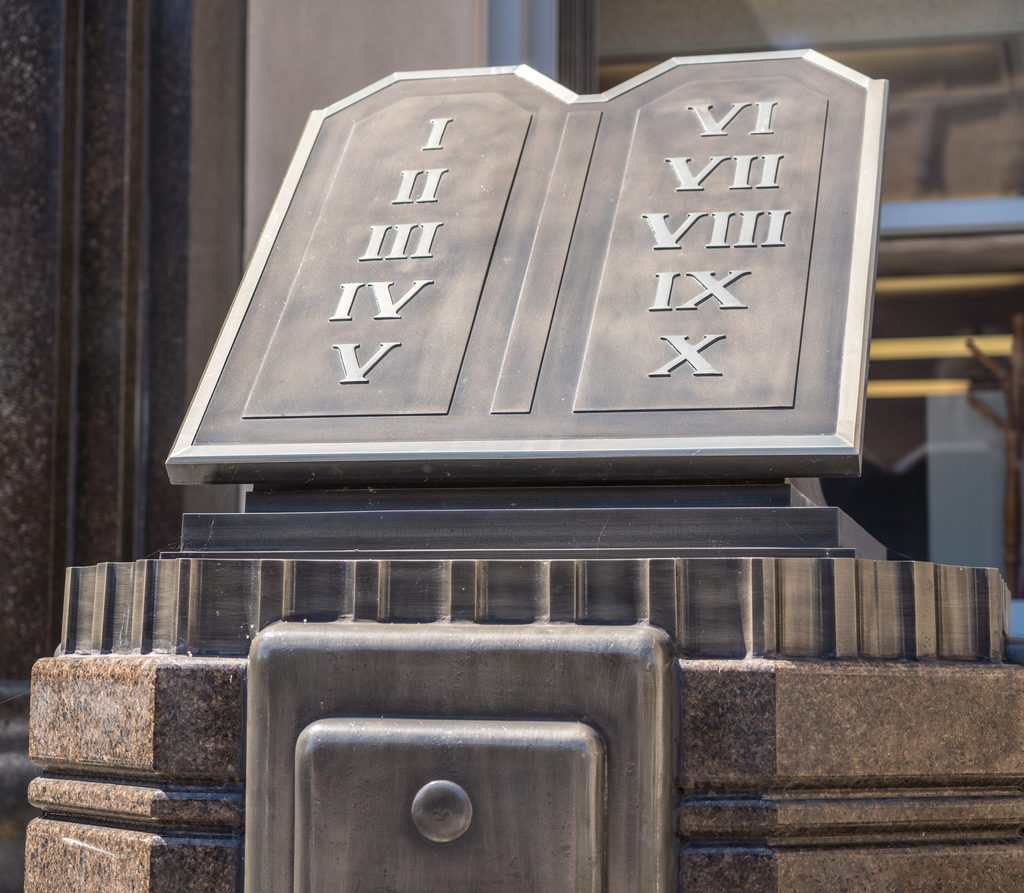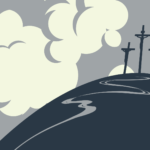7 March – Exodus 20:1-17
“The 10 Commandments” (as this passage is commonly known) is a text often treated as if it exists in a vacuum; an abstracted and neat set of teachings that can be lifted up and moved around without sacrificing any of its utility (not unlike how we might move a standing fan between rooms on a hot summer day – the nature, purpose, and effect of the fan is not impacted by its changed placement). However, like just about everything in Scripture (and entirely unlike a standing fan) this passage, these commandments, are only truly legible when held within the narrative of God’s dealing with the world, after all the reading begins with a “then.” These teachings do not invade the story from without but emerge from within. Their very existence depends upon God’s already demonstrated fidelity to Israel, the promise that God will be Israel’s God and they will be God’s people, a promise fulfilled through the mighty acts of liberation and provision of manna from heaven that mark the story of the Exodus. This is why it is problematic when these commandments are picked up from page within the Bible and plunked down, for instance, on a stone outside a courthouse. This movement enforces a vacuum, an abstraction, that hides the whole and much more wonderful nature of their giving: commandments gifted within a relationship, so that Israel might not be tempted to resemble the ways of their oppressors in Egypt but be a people who witness to the generous and just love of God.
14 March – Numbers 21:4-9
If you’ve ever flown on a plane (back when we could do that) you will have undoubtedly experienced (and perhaps partaken in) a most strange human ritual. The plane has come to a complete stop, the seatbelt light flicks off, and the rolling sound of clicks begin as people hurry to release their belts, stand in the aisle, and contort their bodies in order to extricate their bags so that they can stand and wait and wait and wait for the doors to open. The miracle of flight, of having travelled 1000km in the space of an hour, does nothing to quell the desire to scrap and scrape one’s way to a prime position so as to exit the plane a full two minutes before those suckers waiting in their seats! We do not, as a general rule, like to wait, like to be held from reaching our destination, from moving from ‘arriving’ to ‘arrived’. And so we read, “the people became impatient on the way”. The Israelites, wandering through an endless desert, quickly forget the miraculous way by which they have come thus far (the plagues, parting of seas, provision of manna) and begin to pine for whence they came, for Egypt the land of their oppression (I mean, sure it was bad, but at least they weren’t waiting). Then come the serpents. There’s something allegorical and mystical about their emergence on the scene, especially when we think back to Genesis 3 and the role of the serpent in introducing doubt, division, and discord. This allegorical nature is heightened in how the serpents are dealt with: not obliterated or cast off, but transfigured. Even after the repentance of the people the serpents remain within the camp, biting at their heels. And yet, they need but look upon the bronze serpent, provided by God, and they will be healed. The serpents remain, a symbol for the burden of waiting and wandering, the restlessness and unsettledness of their life, but a new way of relating to them is introduced, one where they need only look to what God has provided to be made well. There is a tradition of reading the plight of the generation of Israelites who never reached the promised land, who instead were fated to wander the desert until they perished – a reading which sees them not as cursed, but blessed; blessed to get to live a life in constant communion with God, a life lived under the pillar of cloud by day and that of fire by night, a life lived where each day one’s daily bread is gifted, from the hand of God, enough for all, so that none need want, a life lived not defined by getting to the next place, but on arriving at each new day in the presence of God. Perhaps we too may learn to look upon those things in our life that are slowing us down in a new way, one which seeks to centre and elevate all that God has given.
21 March – John 12:20-33
It is helpful to have last week’s reading from Numbers (the serpents/bronze serpent) in mind as we read today’s gospel passage. Jesus positions himself as the bronze serpent, who in his crucifixion will be lifted up from the earth, elevated and glorified so that the ruler of this earth (Satan, generally associated with the serpent) will be driven out and all people will be drawn to Jesus (much like the eyes of Israel were drawn to the bronze serpent in order that they may be saved). Throughout his gospel, John, frames Jesus’ crucifixion as an enthronement – a glorification of the Father through the Son – the hour of this crucifixion is the hour not of defeat, despondency, or doubt, but of the victory of God, the judgment of evil, and the salvation of the world. Rembrandt’s 1653 drawing, Christ Crucified Between Two Thieves: The Three Crosses (accessed here: https://www.metmuseum.org/art/collection/search/354631) captures this well. Rembrandt presents the unruly scene of this public execution as shot through with heavenly glory. Jesus, raised above the crowd, is illuminated from above – a searing light that seems to send the various forces that have conspired in his death scurrying, casting their deplorable acts into shadow. In this season, even if we feel surrounded by serpents, we fix our eyes on the cross, on the glory of the Son, who casts out evil and draws all things to himself.
28 March 28 – John 12:12-16
There’s an interesting admission at the end of this reading. The disciples witness the crowds sing Hosannas and watch Jesus climb upon the donkey but are unable to interpret what this means. It is only after his glorification (read: his crucifixion – see last week’s reflection) that they are able to interpret these scenes properly. This serves as a reminder to all of us, the life and ministry of Jesus is read back through his death and resurrection. It is because of his unexpected execution and yet continued (even more unexpected) presence amidst the disciples that his life lived up to that moment takes on paramount significance. Jesus’ teaching, his fellowship and friendship, his ministry of healing and exorcisms, his very person is something that comes into clarity in the wake of his crucifixion and resurrection. Lent has been preparing us for Easter, Palm Sunday turns our eyes to the coming passion, but it is Easter that imbues all of this with significance and sense. There is no way to interpret the life of Christ or formulate a vision of his significance that ignores or suppresses the fact that this man was crucified; which is a good thing, for it tends to be that when Christians forget the crucifixion of their Lord, they find it most easy to ignore the crucified in their midst.
Rev Liam Miller is currently serving as Supply Minister at Forest Kirk Uniting Church.












